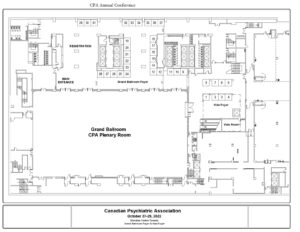S10 – COVID and Mental Health: What Are We Learning?
Saturday, Oct. 29
15:45 – 16:45 (1 hr)
Meeting Room: Birchwood Ballroom (Mezzanine)
Katherine Aitchison*, PhD, FRCPsych; Simon Hatcher, MRCPsych, FRCP; Adam Abba-Aji, FRCPC, MRCPsych
Supported by the Research Committee
CanMEDS Roles:
- Scholar
- Medical Expert
- Health Advocate
At the end of this session, participants will be able to: 1) Name a psychiatric disorder that appears to have increased in frequency during the pandemic; 2) Discuss potential factors influencing statistics on suicide during the pandemic; and 3) List correlates of new-onset obsessive-compulsive symptoms in the pandemic.
While data indicate an increase in rates of psychiatric disorders, such as anxiety disorders, during the COVID pandemic, (1) suicide rates have not increased. The latter would appear to be a paradoxical finding. Strategies for suicide prevention that have worked in other contexts may therefore not be applicable here. Simon Hatcher (Ottawa) will present on why suicide rates have not increased during the pandemic and implications this has for understanding suicide prevention. Katherine Aitchison (Alberta and the Northern Ontario School of Medicine) will present on demographic groups at increased risk of mental health outcomes in association with COVID-19 and suggest some strategies for intervention. Adam Abba-Aji (Alberta) will present on the prevalence and correlates of new-onset obsessive-compulsive symptoms in a Canadian province. Katherine Aitchison will moderate the discussion period.
References:
- Pirkis J, John A, Shin S, et al. Suicide trends in the early months of the COVID-19 pandemic: an interrupted time-series analysis of preliminary data from 21 countries. The Lancet Psychiatry 2021;8:579-88.
- Taquet M, Geddes JR, Husain M, et al. Six-month neurological and psychiatric outcomes in 236,379 survivors of COVID-19: a retrospective cohort study using electronic health records. The Lancet Psychiatry 2021;8:416-27.

